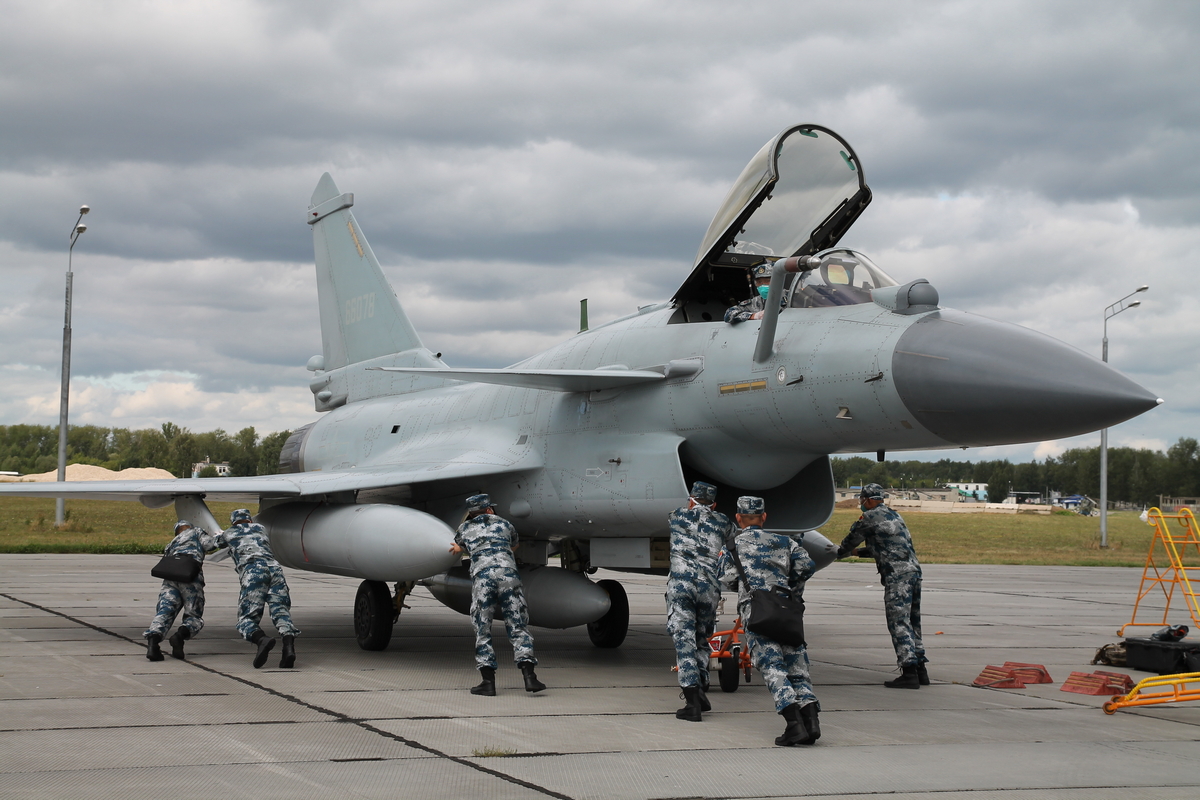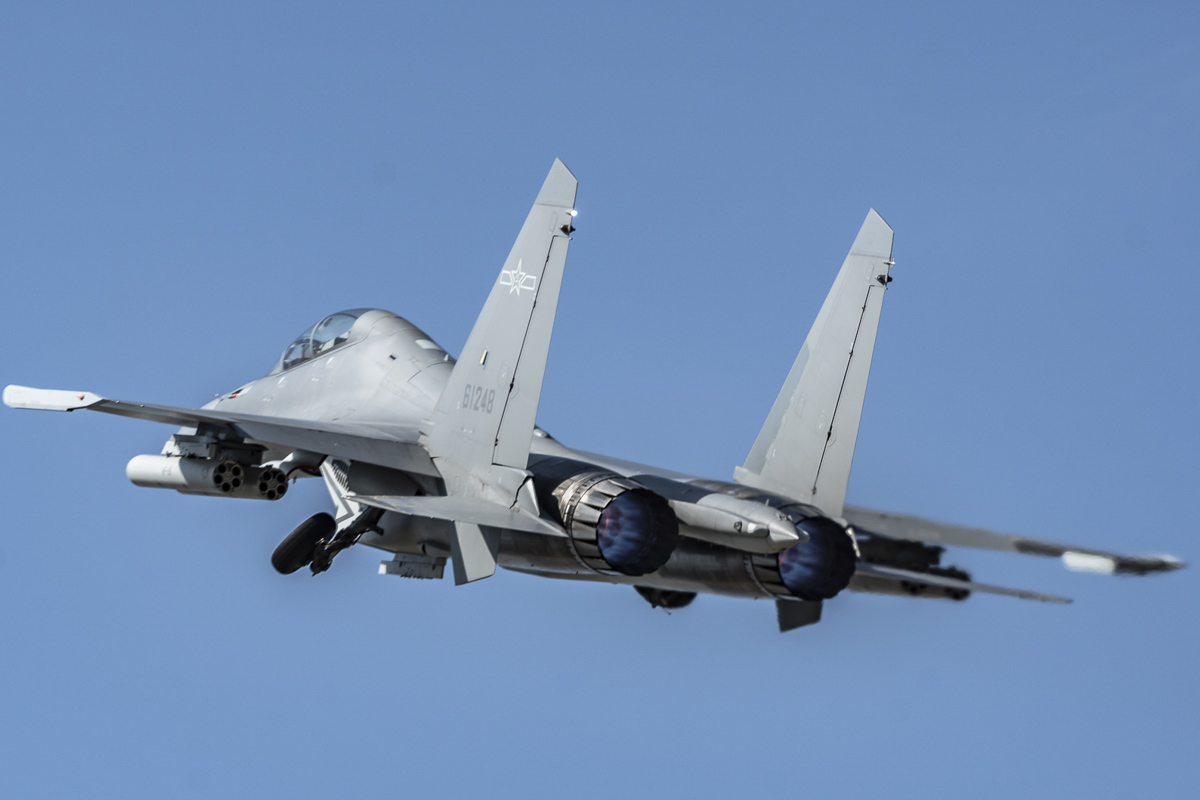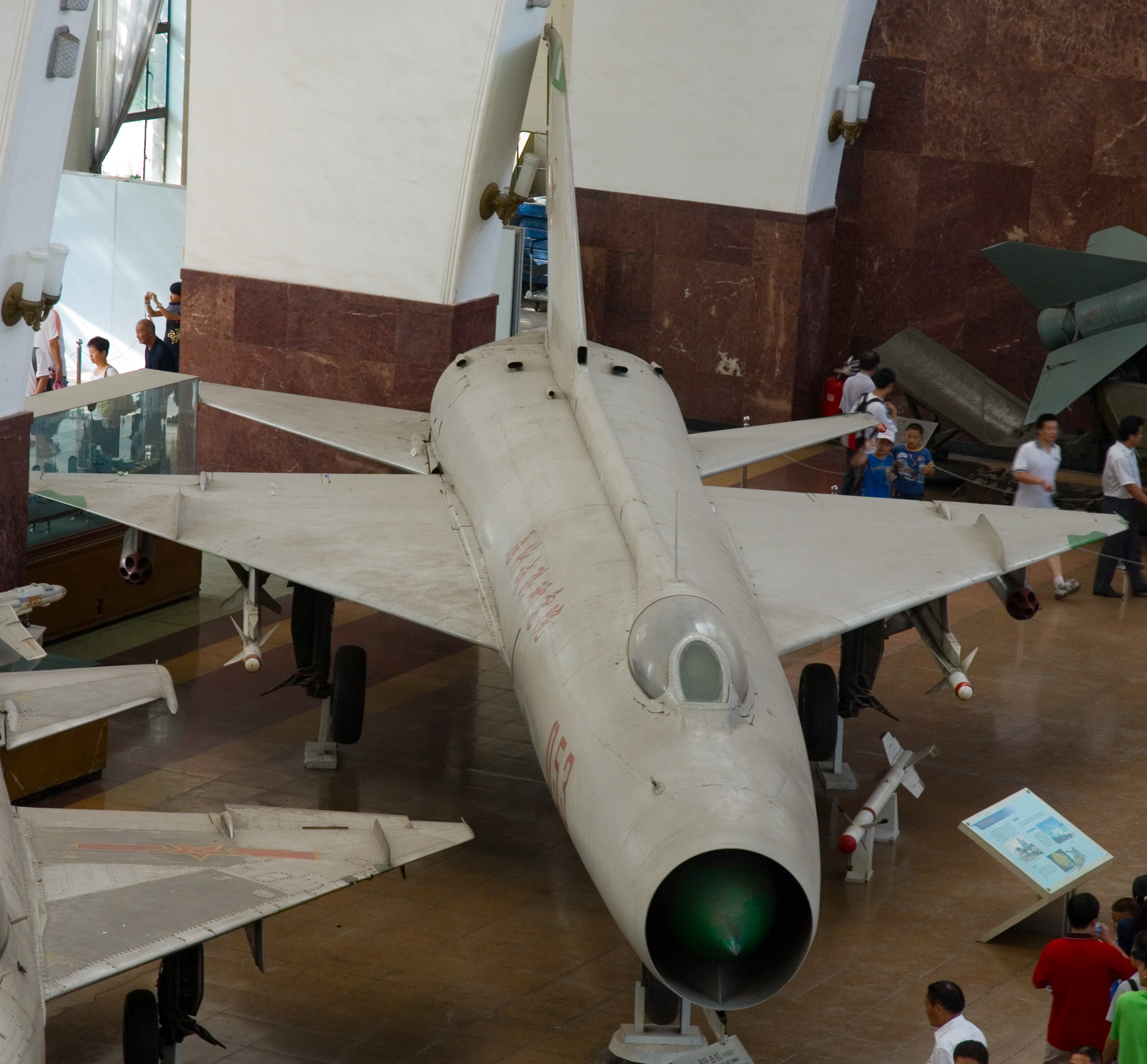|
PLAAF
The People's Liberation Army Air Force (PLAAF; ), also known as the Chinese Air Force (中国空军) or the People's Air Force (人民空军), is an aerial service branch of the People's Liberation Army, the regular armed forces of the People's Republic of China. The PLAAF was officially established on 11 November 1949 and it is composed of 5 branches which are aviation, anti-aircraft artillery, surface-to-air missiles (SAM), radar, and Airborne Corps. The PLAAF first faced combat in the Korean War against the United States using primarily the Mikoyan-Gurevich MiG-15 fighter aircraft, aircraft provided by the Soviet Union, which also assisted with the expansion of the Chinese aerospace industry. Changes in the organization of the PLAAF followed by modernization programs in the 1990s and increased technology development in the 21st century has created the J-20 stealth multirole fighter, the first of its kind for China. History Korean War to the Sino-Soviet Split The ... [...More Info...] [...Related Items...] OR: [Wikipedia] [Google] [Baidu] |
Xian H-6
The Xian H-6 () is a twin-engine jet bomber of the Chinese People's Liberation Army Air Force (PLAAF). The H-6 is a license-built version of the Soviet Tupolev Tu-16 and remains the primary bomber aircraft of the China, People's Republic of China. Delivery of the Tu-16 to China began in 1958, and a license production agreement with the Soviets was signed in the late 1950s. By November 2020, the PLAAF had as many as 231. The latest variant of the H-6 is the H-6N, a heavily redesigned version capable of aerial refueling and carrying air-launched cruise missiles. According to the United States Department of Defense, this will give the PLAAF a long-range standoff missile, standoff offensive air capability with precision-guided munitions. History Having entered service with the Soviet Union in April 1952, the Tupolev Tu-16 was one the Soviets' earliest effective jet bombers with over 1,500 produced through 1962. Early in 1956, the Soviet Union agreed to license production of the T ... [...More Info...] [...Related Items...] OR: [Wikipedia] [Google] [Baidu] |
Chengdu J-20
The Chengdu J-20 (), also known as ''Mighty Dragon'' (), is a twinjet all-weather stealth fighter aircraft developed by China's Chengdu Aerospace Corporation for the People's Liberation Army Air Force (PLAAF). The J-20 is designed as an air superiority fighter with precision strike capability. The aircraft has three variants: the initial production model J-20A, the thrust-vectoring J-20B, and twin-seat aircraft teaming capable J-20S. Descends from the J-XX program of the 1990s, the aircraft made its maiden flight on 11 January 2011, and was officially revealed at the 2016 China International Aviation & Aerospace Exhibition. The aircraft entered service in March 2017 with the first J-20 combat unit formed in February 2018, making China the second country in the world and the first in Asia to field an operational stealth aircraft. The J-20 is the world's third operational fifth-generation stealth fighter aircraft after the F-22 and F-35. Development The J-20 emerged ... [...More Info...] [...Related Items...] OR: [Wikipedia] [Google] [Baidu] |
Shenyang J-11
The Shenyang J-11 ( Chinese: 歼-11; NATO reporting name Flanker-B, -L) is a twin-engine jet fighter of the People's Republic of China whose airframe is derived from the Soviet-designed Sukhoi Su-27. It is manufactured by the Shenyang Aircraft Corporation (SAC). The aircraft is operated by the People's Liberation Army Air Force (PLAAF) and the People's Liberation Army Naval Air Force (PLANAF). Development Proposed J-11 In the 1970s, the PLAAF initiated a project to develop a replacement for its MiG-19s. The Shenyang Aircraft Factory proposal, designated J-11, was a new light fighter powered by the British Rolls-Royce Spey 512 engine, with better maneuverability than the MiG-19 and better climb rate than the MiG-21. The project was abandoned due to difficulties in obtaining the engines. Background: purchase of the Su-27 China is the first foreign operator of the Su-27 and the only country to acquire the fighter before the Fall of the Soviet Union. The deal, known as the '9 ... [...More Info...] [...Related Items...] OR: [Wikipedia] [Google] [Baidu] |
Chengdu J-10
The Chengdu J-10 Vigorous Dragon (; NATO reporting name: Firebird), is a medium-weight, single-engine, multirole combat aircraft capable of all-weather operations, configured with a delta wing and canard design, with fly-by-wire flight controls, and produced by the Chengdu Aircraft Corporation (CAC) for the People's Liberation Army Air Force (PLAAF), Pakistan Air Force (PAF) and People's Liberation Army Naval Air Force (PLANAF). The J-10 is mainly designed for air-to-air combat, but can also perform strike missions. Development In 1981, PLAAF Commander Zhang Tingfa submitted a proposal to Deng Xiaoping for the development of a third-generation fighter for ; it was accepted later that year by the Central Military Commission (CMC). It was the first Chinese aircraft program to incorporate modern development and acquisition processes.''Research, Development, and Acquisition'', page 2 In one departure from the past, the supplier was now responsible directly to the custo ... [...More Info...] [...Related Items...] OR: [Wikipedia] [Google] [Baidu] |
Chengdu J-7
The Chengdu J-7 ( Chinese: 歼-7; third generation export version F-7; NATO reporting name: Fishcan) is a People's Republic of China fighter aircraft. It is a license-built version of the Soviet Mikoyan-Gurevich MiG-21, and thus shares many similarities with the MiG-21. The aircraft is armed with short-range, infrared homing air-to-air missiles and mainly designed for short range air-to-air combat. The aircraft is also used for close air support. On 30 March 1962, the Soviet Union and China signed a technology transference arrangement pertaining to the MiG-21. Allegedly, while various kits, components, completed aircraft and associated documents were delivered to the Shenyang Aircraft Factory, the design documentation was incomplete, and Chinese designers made efforts to reverse engineer the aircraft. While the two aircraft are greatly similar, areas of difference include the hydraulic systems and internal fuel arrangements. During March 1964, domestic production of the ... [...More Info...] [...Related Items...] OR: [Wikipedia] [Google] [Baidu] |
Xian JH-7
The Xi'an JH-7 ( – fighter-bomber; NATO reporting name Flounder), also known as the FBC-1 (Fighter/Bomber China-1) Flying Leopard, is a tandem two-seat, twin-engine fighter-bomber in service with the People's Liberation Army Naval Air Force (PLANAF), and the People's Liberation Army Air Force (PLAAF). The main contractors are Xi'an Aircraft Industrial Corporation (XAC) and the 603rd Aircraft Design Institute (later named the First Aircraft Institute of AVIC-I). The first JH-7s were delivered to the PLANAF in the mid-1990s for evaluation, with the improved JH-7A entering service in 2004. Development history A new fighter bomber In the early 1970s, the PLAAF required a new fighter-bomber to replace the Harbin H-5 and Nanchang Q-5. A request was duly submitted to the Ministry of Aviation Industry (later renamed to the Aviation Industry Corporation of China), which organized a domestic development program when efforts to secure a joint venture with foreign partners failed. ... [...More Info...] [...Related Items...] OR: [Wikipedia] [Google] [Baidu] |
People's Liberation Army
The People's Liberation Army (PLA) is the principal military force of the People's Republic of China and the armed wing of the Chinese Communist Party (CCP). The PLA consists of five service branches: the Ground Force, Navy, Air Force, Rocket Force, and Strategic Support Force. It is under the leadership of the Central Military Commission (CMC) with its chairman as commander-in-chief. The PLA can trace its origins during the Republican Era to the left-wing units of the National Revolutionary Army (NRA) of the Kuomintang (KMT) when they broke away on 1 August 1927 in an uprising against the nationalist government as the Chinese Red Army before being reintegrated into the NRA as units of New Fourth Army and Eighth Route Army during the Second Sino-Japanese War. The two NRA communist units were reconstituted into the PLA on 10 October 1947. Today, the majority of military units around the country are assigned to one of five theater commands by geographical locat ... [...More Info...] [...Related Items...] OR: [Wikipedia] [Google] [Baidu] |
Shenyang J-16
The Shenyang J-16 ( Chinese: 歼-16) is a Chinese advanced fourth-generation, tandem-seat, twinjet, multirole strike fighterBronk, page 38 developed from the Shenyang J-11 (itself derived from the Sukhoi Su-27) and built by Shenyang Aircraft Corporation. It is operated by the People's Liberation Army Air Force (PLAAF). Design and development In the 1990s, China purchased Sukhoi Su-27 air superiority fighters from Russia, including those license-produced in China as the Shenyang J-11A.Bronk, page 37 The J-11A was further developed into the J-11B single seat and BS twin seat variant with indigenous technology. The J-16 is a strike aircraft derived from the J-11BS model. The J-16 is equipped with an AESA radar and is powered by two Chinese Shenyang WS-10A turbofan engines. Weight is reduced through greater use of composite materials. J-16 units have received radar-absorbent paint to reduce its radar signature, and enhance its Suppression of Enemy Air Defenses (SEAD) capab ... [...More Info...] [...Related Items...] OR: [Wikipedia] [Google] [Baidu] |
Su-27
The Sukhoi Su-27 (russian: Сухой Су-27; NATO reporting name: Flanker) is a Soviet-origin twin-engine supermaneuverable fighter aircraft designed by Sukhoi. It was intended as a direct competitor for the large US fourth-generation jet fighters such as the Grumman F-14 Tomcat and McDonnell Douglas F-15 Eagle, with range, heavy aircraft ordnance, sophisticated avionics and high maneuverability. The Su-27 was designed for air superiority missions, and subsequent variants are able to perform almost all aerial warfare operations. It was designed with the Mikoyan MiG-29 as its complement. The Su-27 entered service with the Soviet Air Forces in 1985. The primary role was long range air defence against American SAC Rockwell B-1B Lancer and Boeing B-52G and H Stratofortress bombers, protecting the Soviet coast from aircraft carriers and flying long range fighter escort for Soviet heavy bombers such as the Tupolev Tu-95, Tupolev Tu-22M and Tupolev Tu-160. The Su-27 was deve ... [...More Info...] [...Related Items...] OR: [Wikipedia] [Google] [Baidu] |
Jiang (rank)
(; ja, 将, Shō; ) is the rank held by general officers in some East Asian militaries. The ranks are used in both the People's Republic of China and the Republic of China on Taiwan. The People's Liberation Army and the People's Armed Police use three levels at present while the Republic of China Armed Forces use four. In both North Korea, North and South Korea the rank is also used. Chinese variant People's Liberation Army The same rank names are used for all services, prefixed by ''haijun'' () or ''kongjun'' (). Under the rank system in place in the PLA in the era 1955–1965, there existed the rank of () or Grand General. This rank was awarded to 10 of the veteran leaders of the PLA in 1955 and never conferred again. It was considered equivalent to the Soviet rank of (Army General (Soviet rank), Army General) which is generally considered a five-star rank, although the insignia itself had only four. The decision to name the equivalent rank when it was briefly re-est ... [...More Info...] [...Related Items...] OR: [Wikipedia] [Google] [Baidu] |
Shaanxi Y-8
The Shaanxi Y-8 or Yunshuji-8 () aircraft is a medium size medium range transport aircraft produced by Shaanxi Aircraft Corporation in China, based on the Soviet Antonov An-12. It has become one of China's most popular military and civilian transport/cargo aircraft, with many variants produced and exported. Although the An-12 is no longer made in Ukraine, the Chinese Y-8 continues to be upgraded and produced. An estimated 169 Y-8 aircraft had been built by 2010. Design and development Imported An-12 In the 1960s, China purchased several An-12 aircraft from the Soviet Union, along with license to assemble the aircraft locally. However, due to the Sino-Soviet split, the Soviet Union withdrew its technical assistance. The Xi'an Aircraft Company and Xi'an Aircraft Design Institute worked to reverse engineer the An-12 for local production. Domestic Design of the aircraft was completed by February 1972. Major features of the Y-8 included a glazed nose and tail turret derived from ... [...More Info...] [...Related Items...] OR: [Wikipedia] [Google] [Baidu] |
Shenyang J-8
The Shenyang J-8 (Chinese: 歼-8; NATO reporting name: Finback) is an interceptor aircraft developed by the 601 Institute (Shenyang) in the People's Republic of China (PRC). It was conceived in the early 1960s as a low-risk program based on enlarging the Mikoyan-Gurevich MiG-21F, a version of which the PRC was producing as the Chengdu J-7. The original J-8 experienced protracted development due to disruption from the Cultural Revolution; the prototypes first flew in 1969 but the design was not finalized until 1979 with the aircraft entering service in 1980. The J-8II/J-8B (NATO reporting name: Finback-B) was a major development of the J-8 and was essentially a new aircraft. The J-8II replaced the nose air intake and its shock cone with an ogival radome and lateral air intakes to create room for a modern fire-control radar, and used more powerful engines. The aircraft started development in 1982, and was cleared for production and service in 1988. The J-8II was the basis for all ... [...More Info...] [...Related Items...] OR: [Wikipedia] [Google] [Baidu] |
.jpg)









